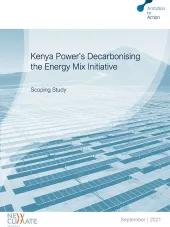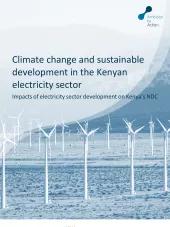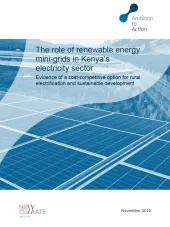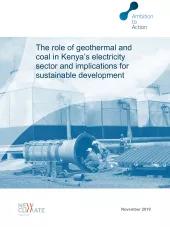This study provides new and additional insights on the specific link between residential cooking solutions, climate change, health impacts and associated sustainable development objectives in Kenya. It builds on the 2019 National Cooking Sector Study and uses scenario modelling to present different possible development pathways for the Kenyan residential cooking sector, estimating their respective impact on GHG emissions and human health, and additional analysis on fuel use, energy demand and fuel expenditure as well as deforestation.
Main findings:
Scenarios
Based on five cooking sector development scenarios, this study:
- ) quantifies GHG emissions and mitigation potentials;
- ) estimates the fuel mix and energy demand;
- ) determines the average fuel expenditure per household;
- ) estimates the impact on deforestation;
- ) evaluates the type and level of exposure to household air pollutants;
- ) assesses the impact on human health.
The findings from this combined modelling exercise can contribute to planning and policy making in three relevant national institutions: The Climate Change Directorate within the Ministry of Environment and Forestry, the Ministry of Energy, and the Ministry of Health. 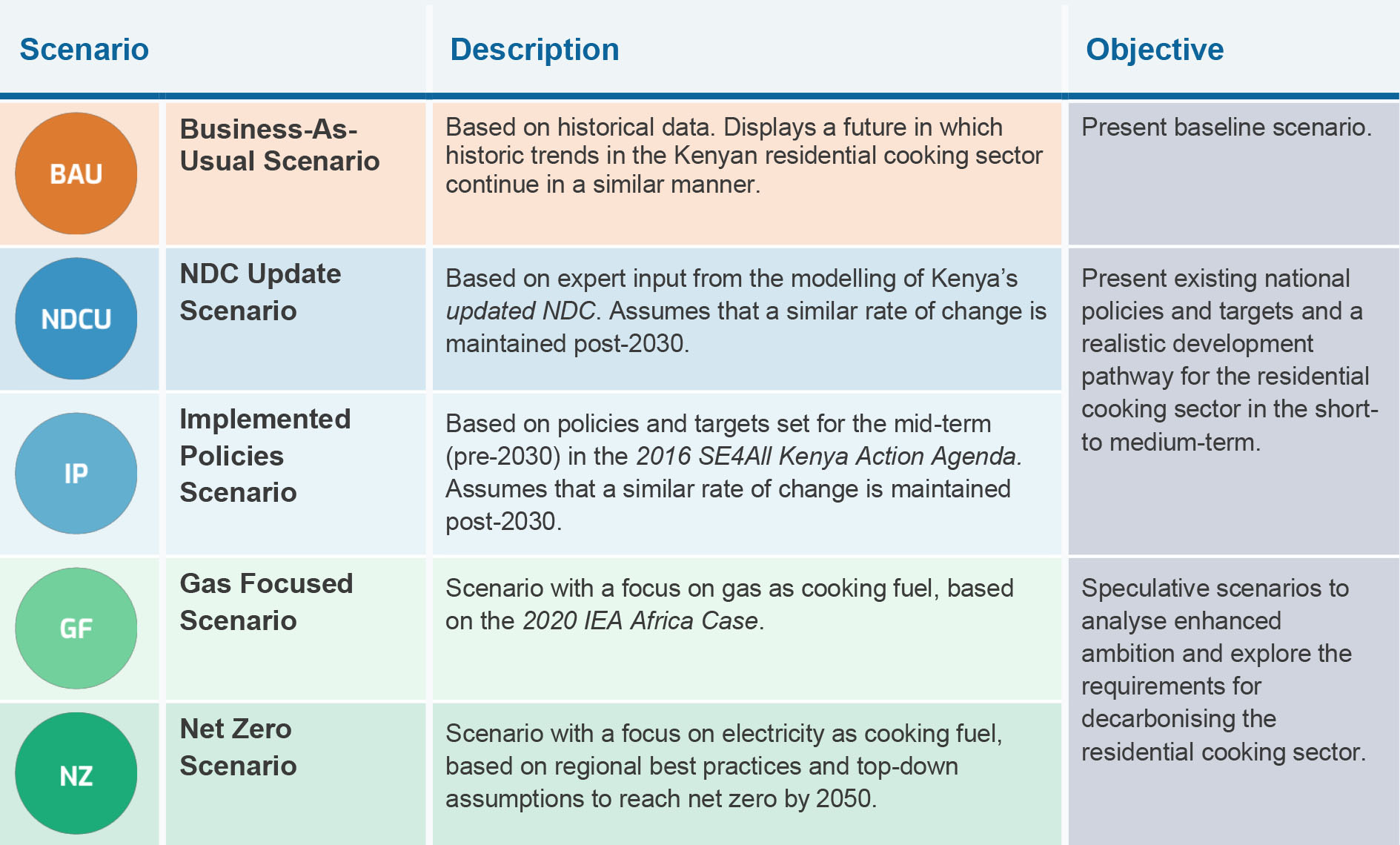
GHG emissions and mitigation potential
Kenya ratified the Paris Agreement and set itself the target to reduce total national GHG emissions by 32% until 2030. Following a development pathway that is fully aligned with the Paris Agreement also implies that global emissions from the energy sector must reach net-zero by the mid of this century. In the model developed in this study, total GHG emissions from residential cooking are estimated to amount to 24.8 MtCO2e annually in 2019. 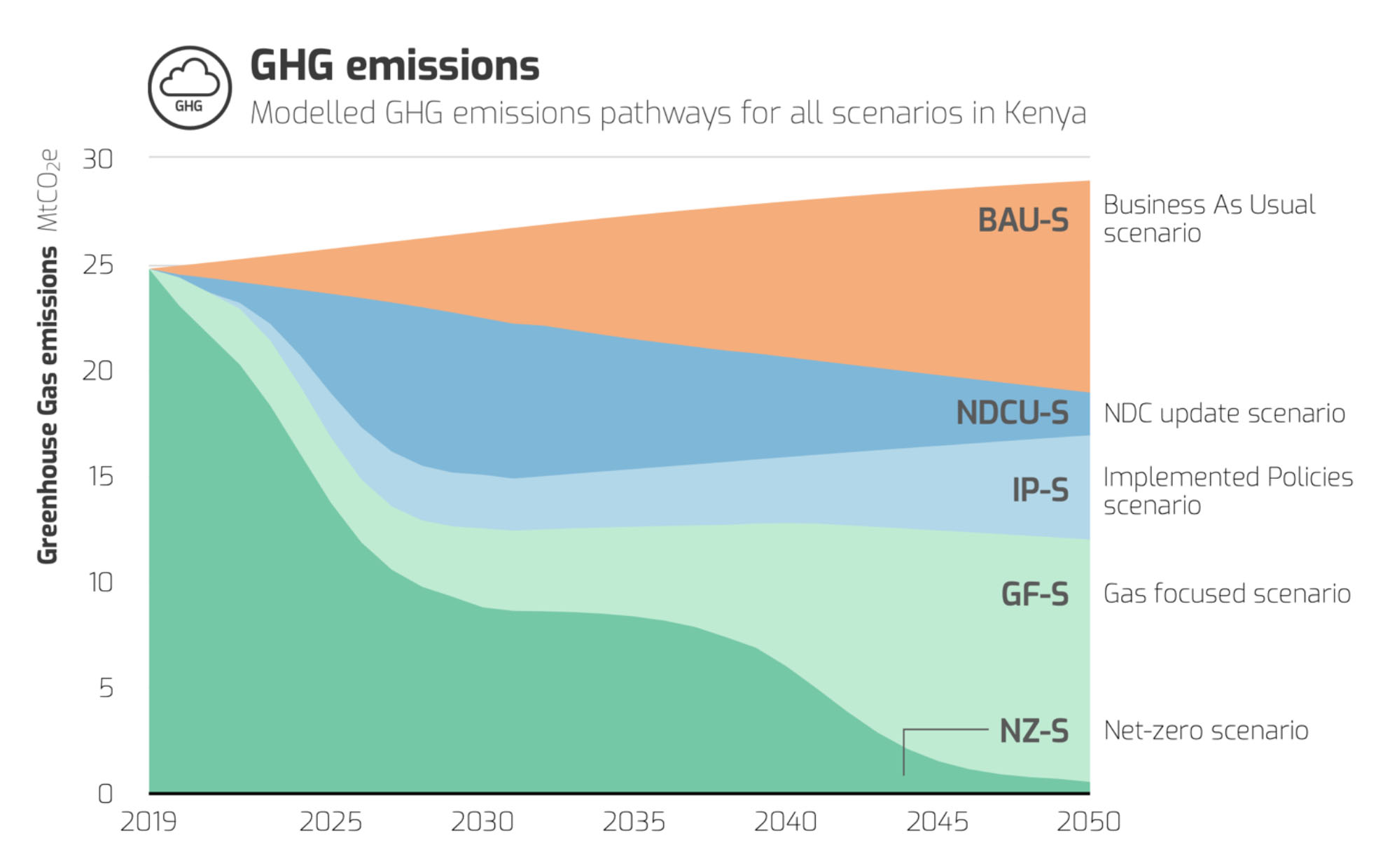 The 2018-2022 NCCAP estimates that the uptake of alternative fuels and efficient cookstoves has a mitigation potential of 7.1 MtCO2e. The scenarios developed in this study show that more can be achieved if the focus is shifted from modern cooking (LPG, improved biomass stoves) to clean cooking solutions (electric, biogas, bioethanol stoves). In the GF-S, which assumes increased access to LPG and a scale up of electricity, biogas and bioethanol, emissions could be almost halved by mid-century. The most ambitious NZ-S, which assumes a phase out of solid biomass and a substitution with electricity, biogas and bioethanol, brings emissions down to net-zero by mid-century, showing the strongest alignment with the quest of the Paris Agreement to decarbonise the energy sector (see Figure).
The 2018-2022 NCCAP estimates that the uptake of alternative fuels and efficient cookstoves has a mitigation potential of 7.1 MtCO2e. The scenarios developed in this study show that more can be achieved if the focus is shifted from modern cooking (LPG, improved biomass stoves) to clean cooking solutions (electric, biogas, bioethanol stoves). In the GF-S, which assumes increased access to LPG and a scale up of electricity, biogas and bioethanol, emissions could be almost halved by mid-century. The most ambitious NZ-S, which assumes a phase out of solid biomass and a substitution with electricity, biogas and bioethanol, brings emissions down to net-zero by mid-century, showing the strongest alignment with the quest of the Paris Agreement to decarbonise the energy sector (see Figure).
Air pollution and health impacts
The fuel and technology with which households prepare their food is one of the main sources of HAP. Each scenario has significant benefits in terms of avoided air pollution and premature deaths compared to the BAU-S. If the NZ-S was to be fully implemented, almost half a million premature deaths could be avoided over the timeframe of 30 years. The IP-S and GF-S show health benefits in the order of 250,000 to 300,000 saved lives, respectively, and the NDCU-S about 145,000. However, these are conservative figures, since a range of indicators – including morbidity-related factors, health impacts from other pollutants, effects on children, and workdays lost – were not accounted for in the analysis. 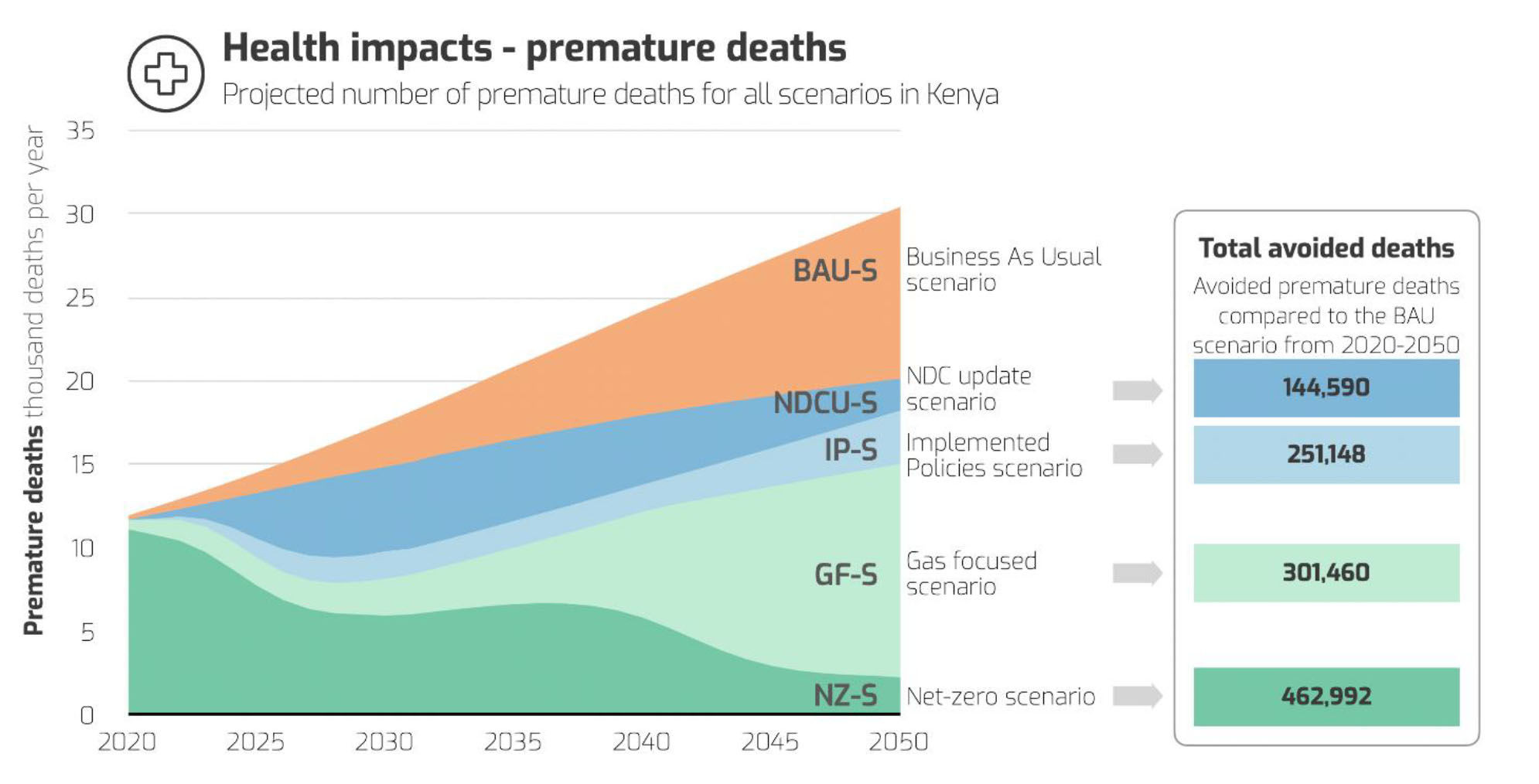 Additional analysis on fuel use and expenditure, energy demand and deforestation can be found in Chapter 3 of the report.
Additional analysis on fuel use and expenditure, energy demand and deforestation can be found in Chapter 3 of the report.
Key takeaways
- There is significant mitigation potential in the residential cooking sector in Kenya.
- Mitigation in the residential cooking sector contributes to climate, health, and other sustainable development benefits.
- Clean cooking is already being recognised as a transversal issue in Kenya’s policy landscape.
- Rural areas still record ultra-low access rates and risk being left behind in the transition.
- There are opportunities to promote renewable biofuels and electric cooking in Kenya.
Key challenges
These key takeaways are set against three challenges that currently hamper the transition to a safe and clean residential cooking sector in Kenya:
- Economic/financial: High upfront technology costs and expected fuel costs, paired with underdeveloped infrastructure for technology and fuel distribution, impede an increased uptake of cleaner cookstoves.
- Cultural: The important cultural aspects of cooking and the practice of fuel stacking can considerably slow down the transition to cleaner cooking.
- Political: While several policies and strategies exist that refer to the residential cooking sector, there is a lack of one comprehensive, sector-wide strategy to guide the transition to safe and clean cooking.
Recommendations
- Establish a permanent responsible institution and coordinated planning process.
- Develop a dedicated, comprehensive long-term transition strategy.
- Prioritise clean solutions and the gradual phase out of improved cookstoves in the longer term.
- Increase public awareness of the potential of clean cooking to support climate and other sustainable development objectives.
- Establish an improved system for data collection and analysis.
- Promote innovative infrastructure solutions.


